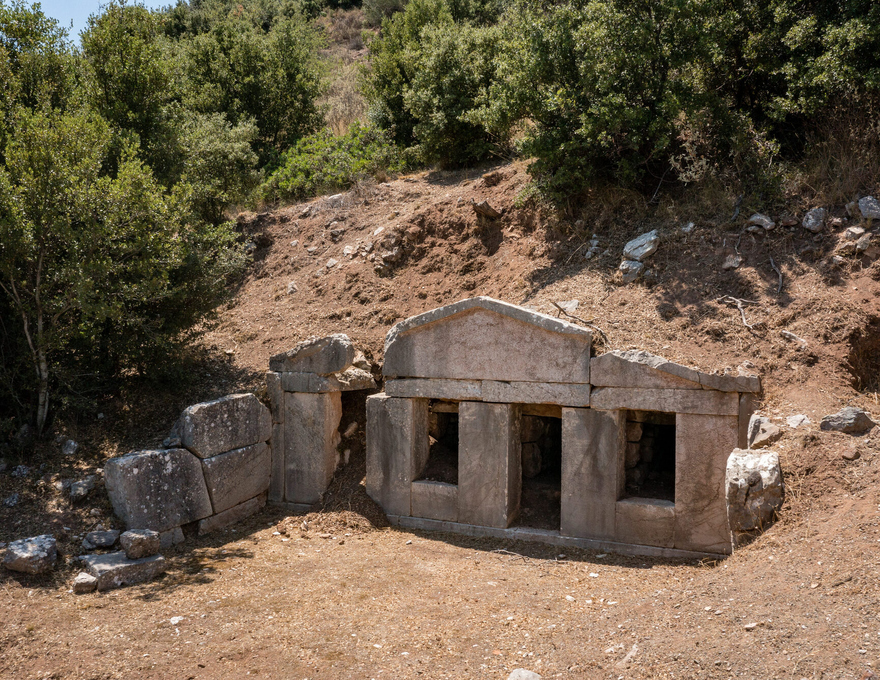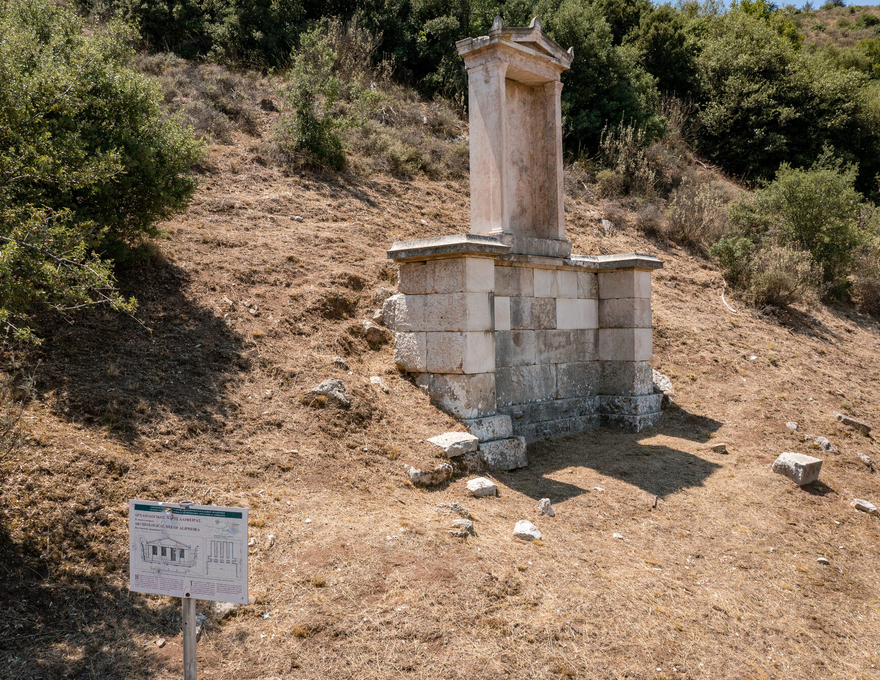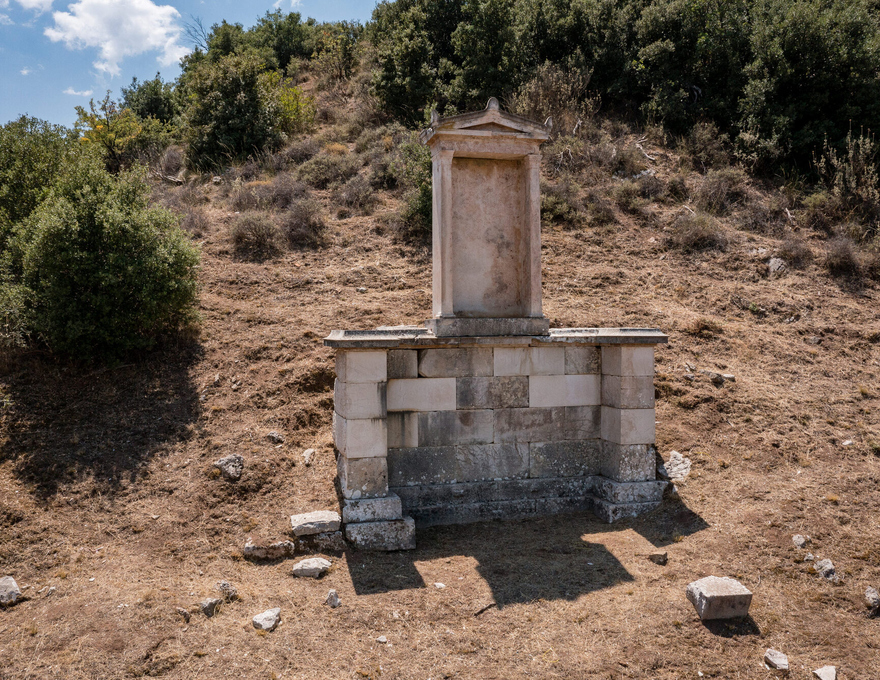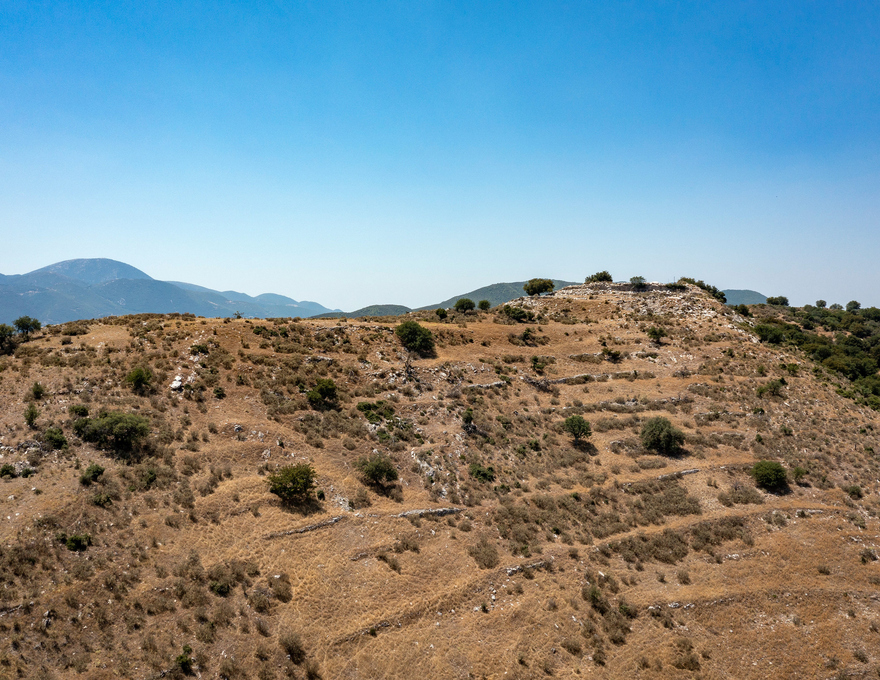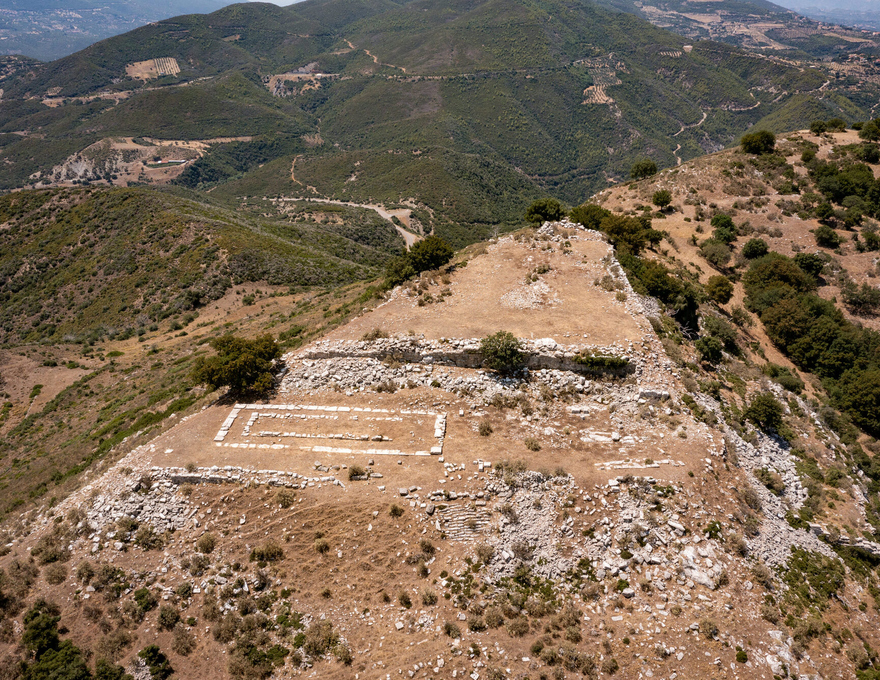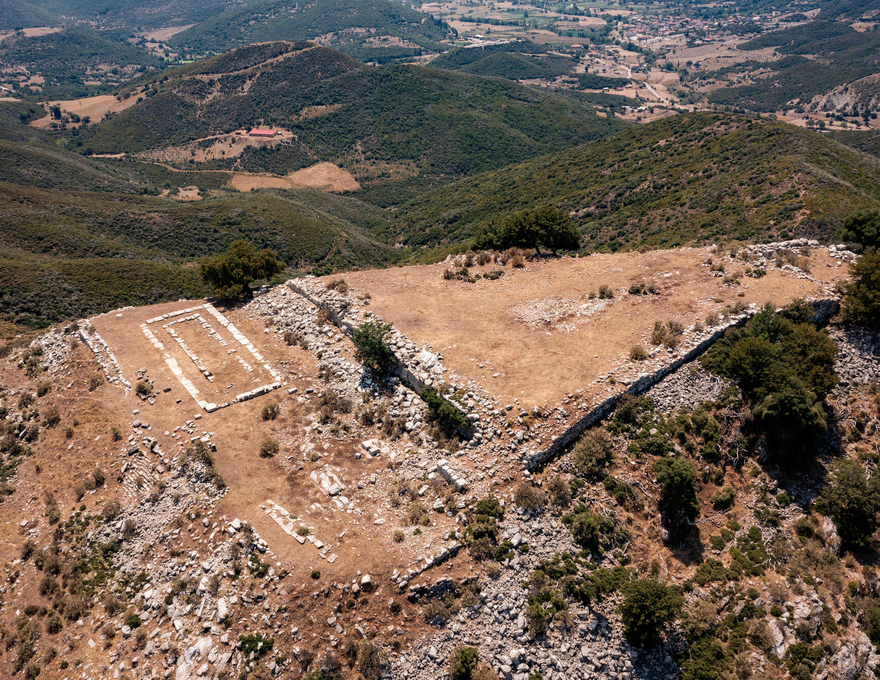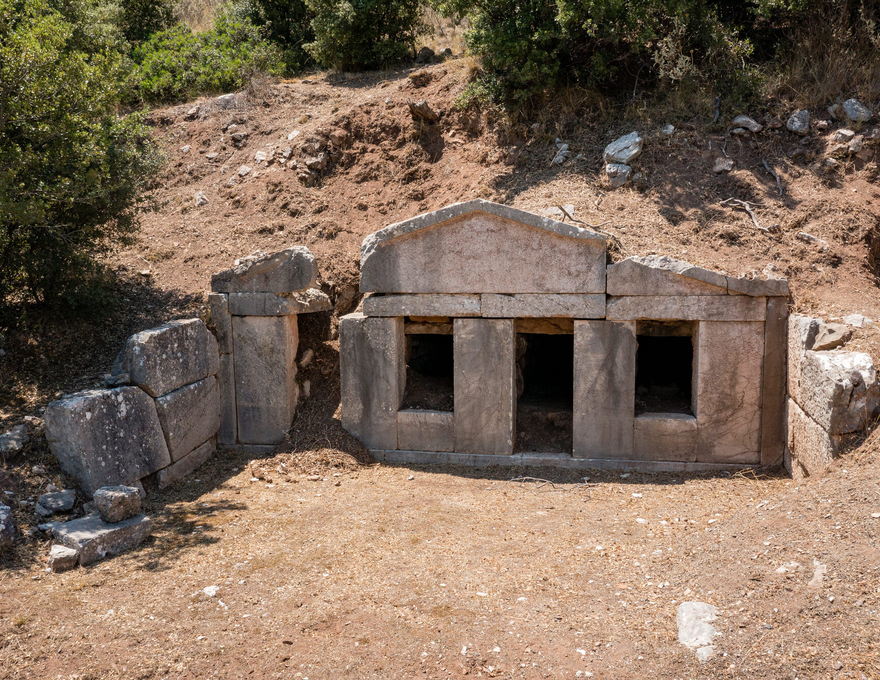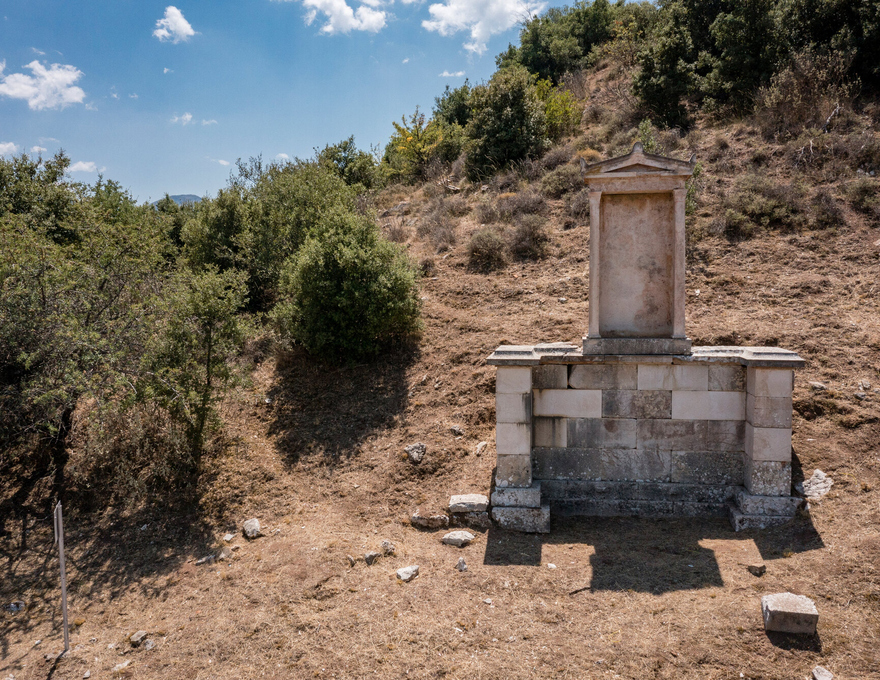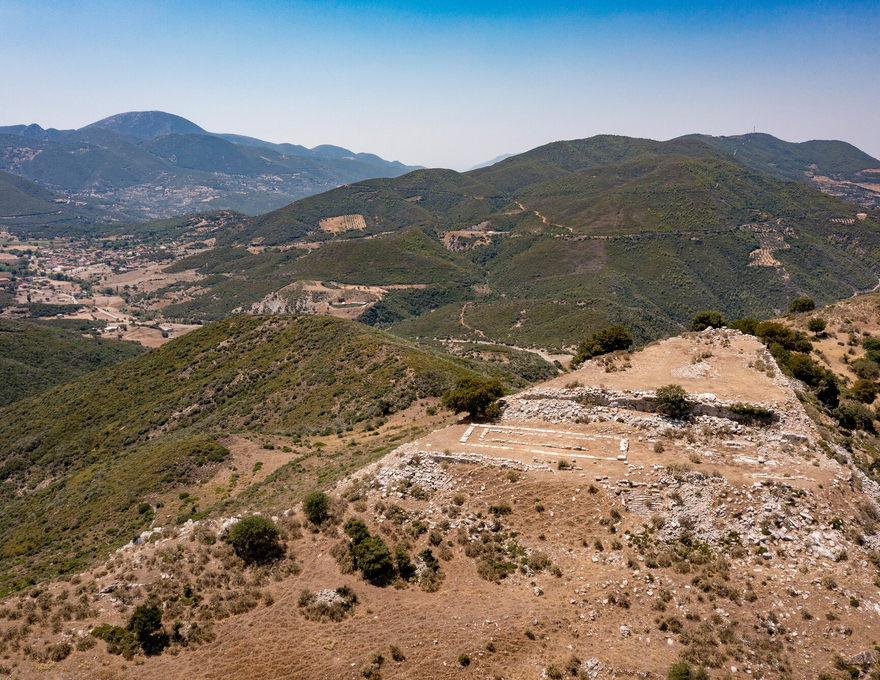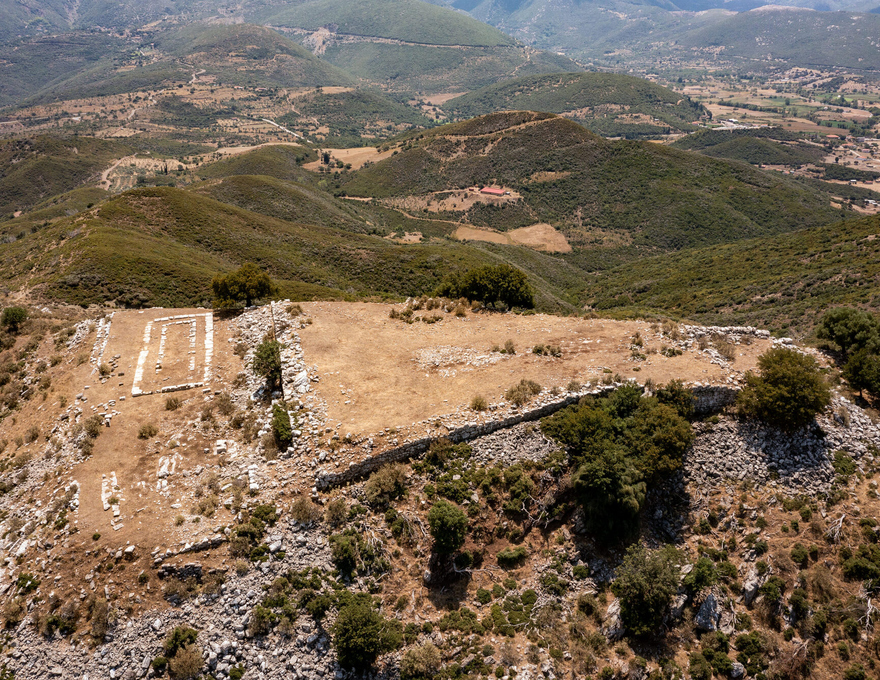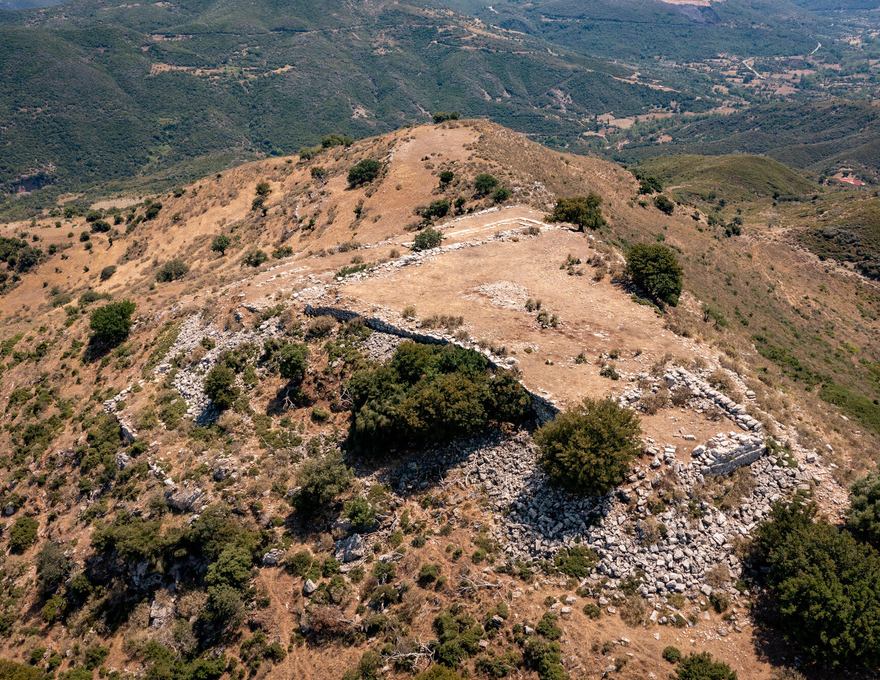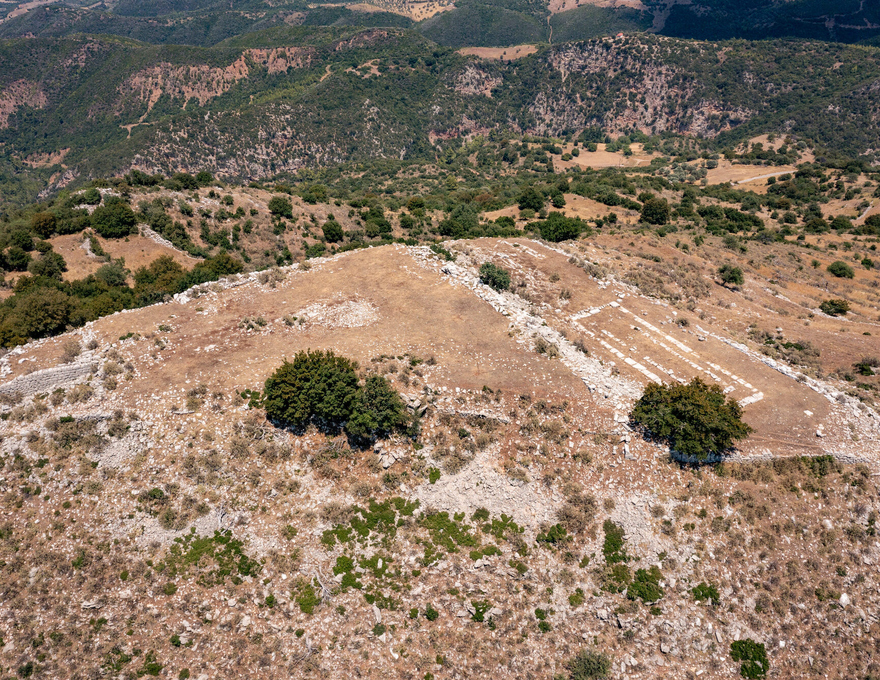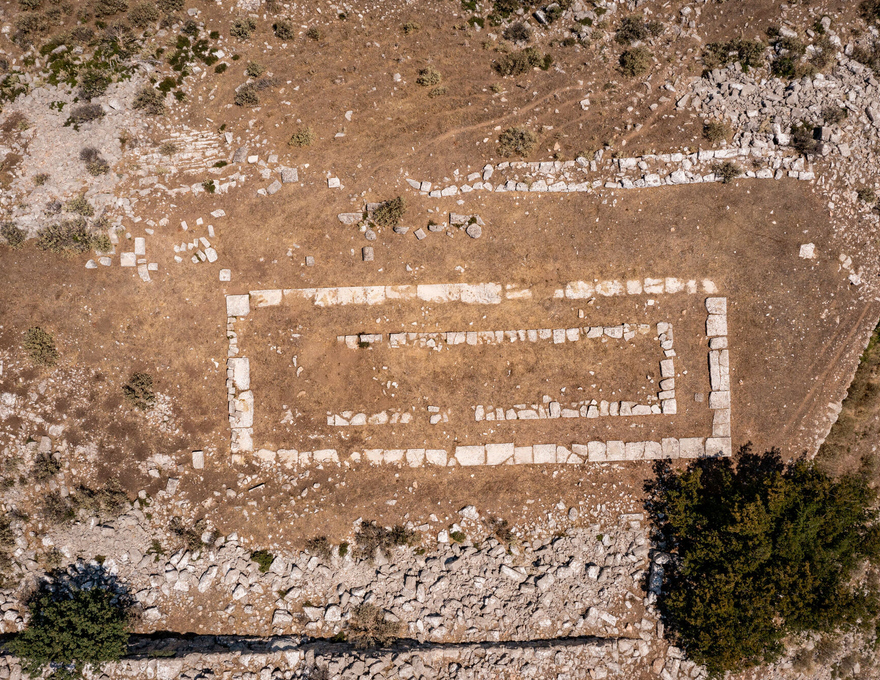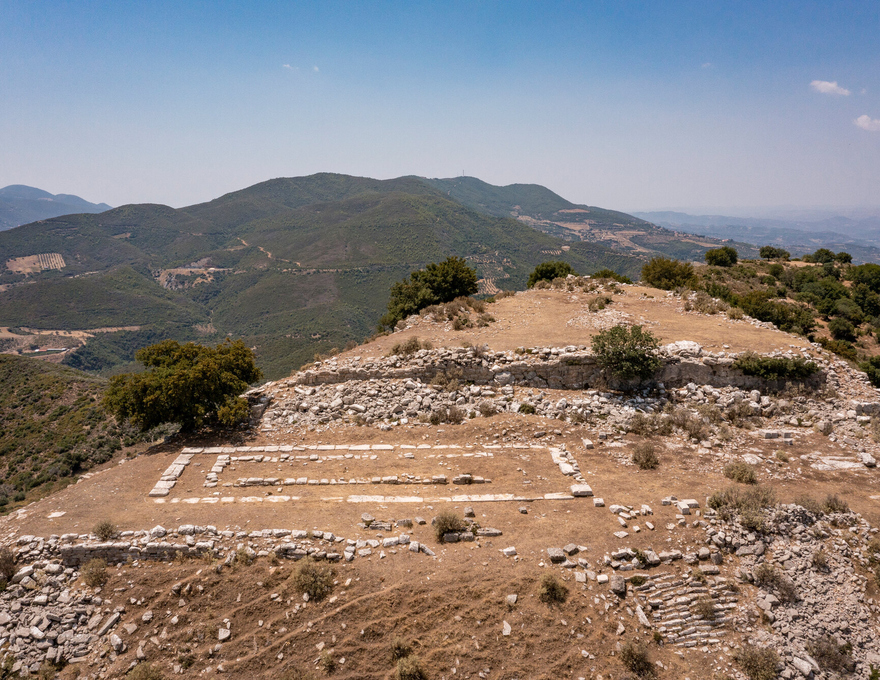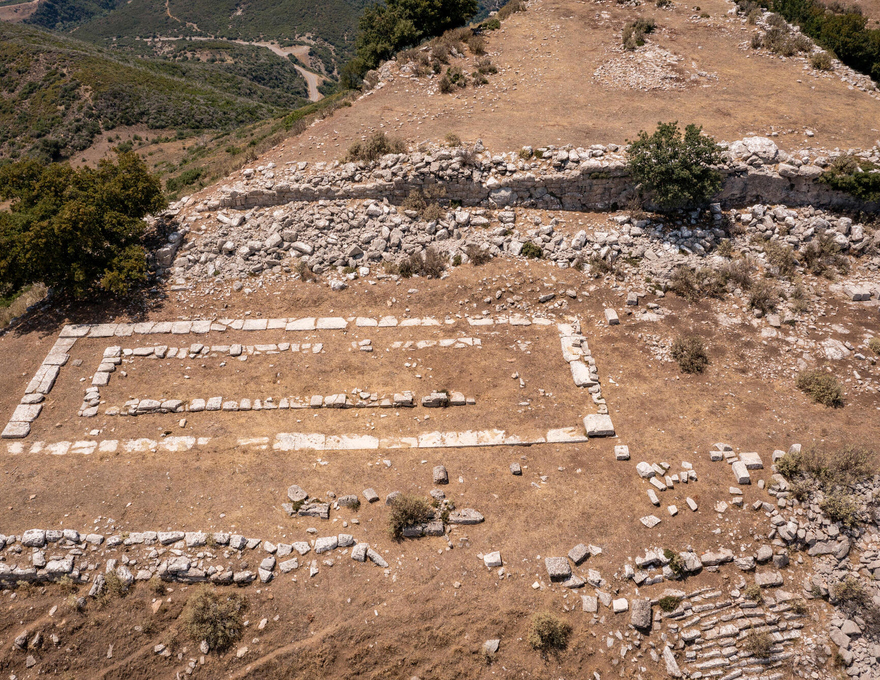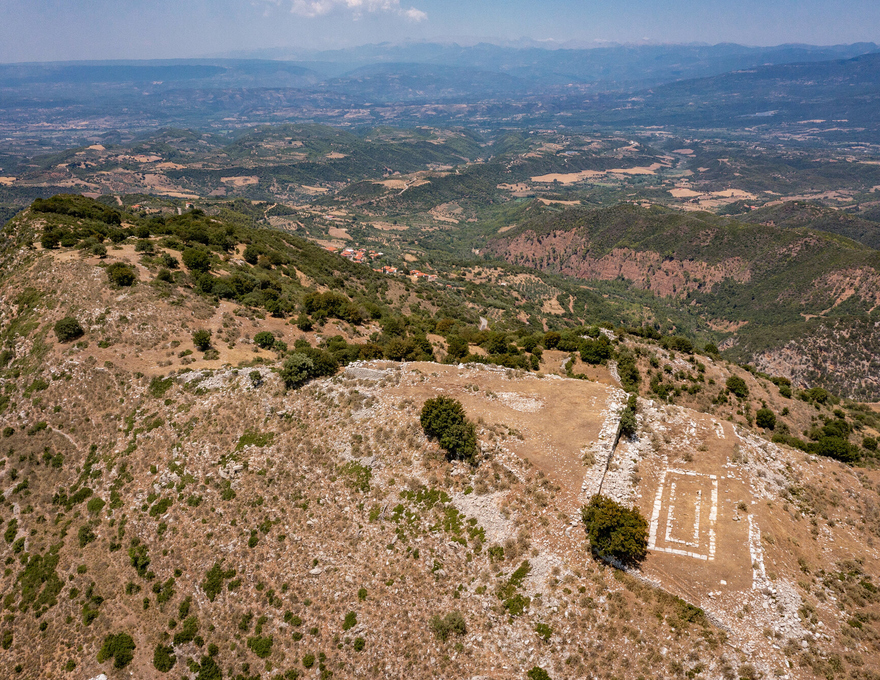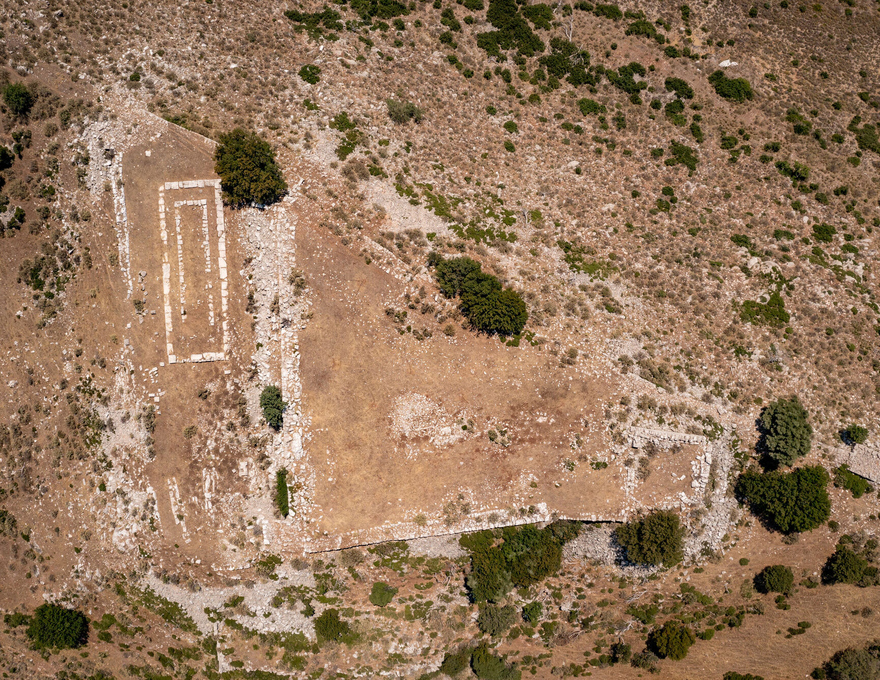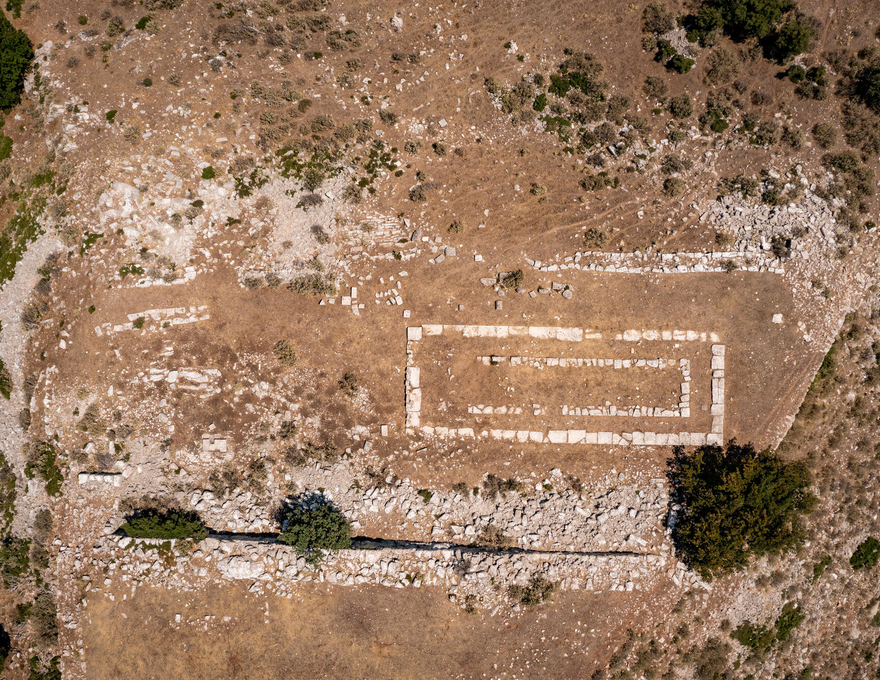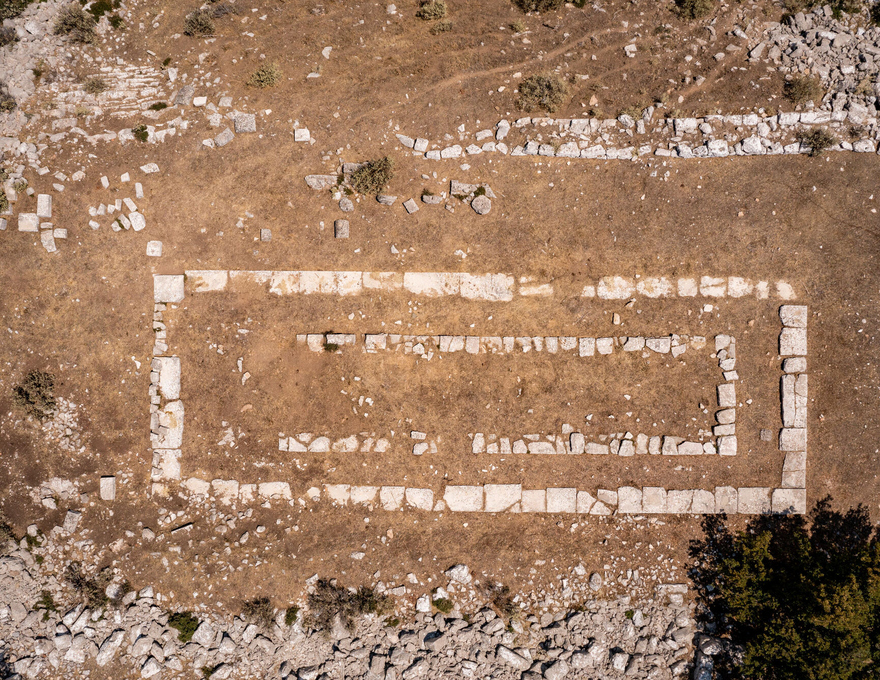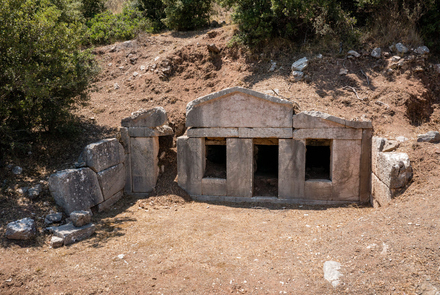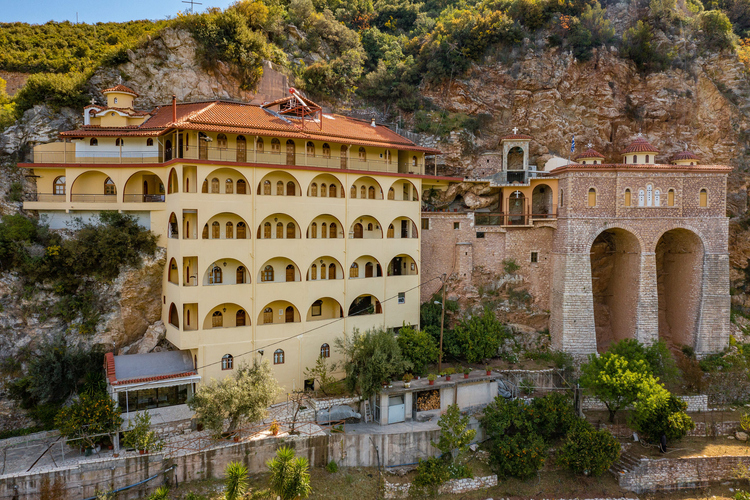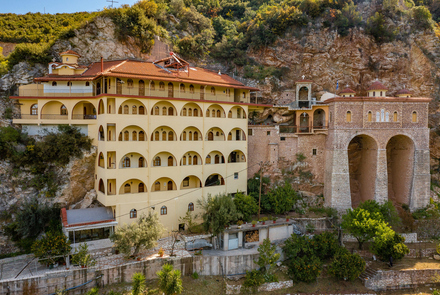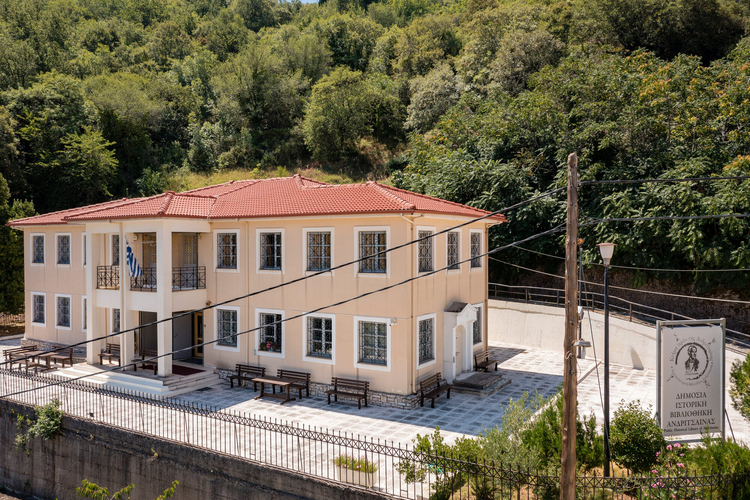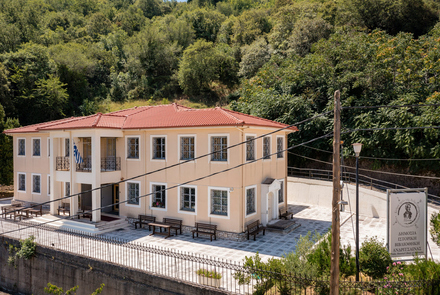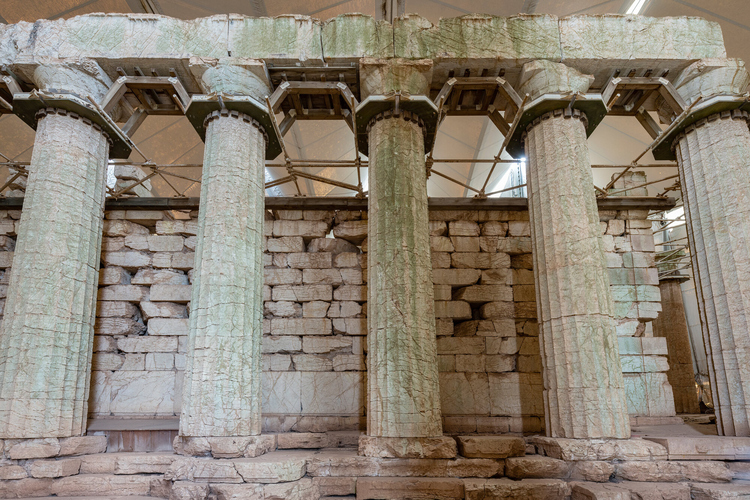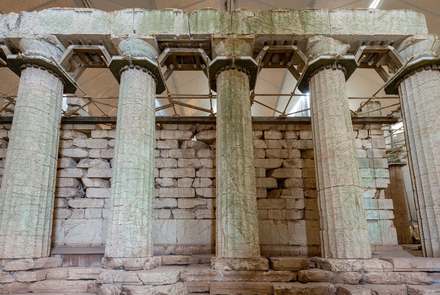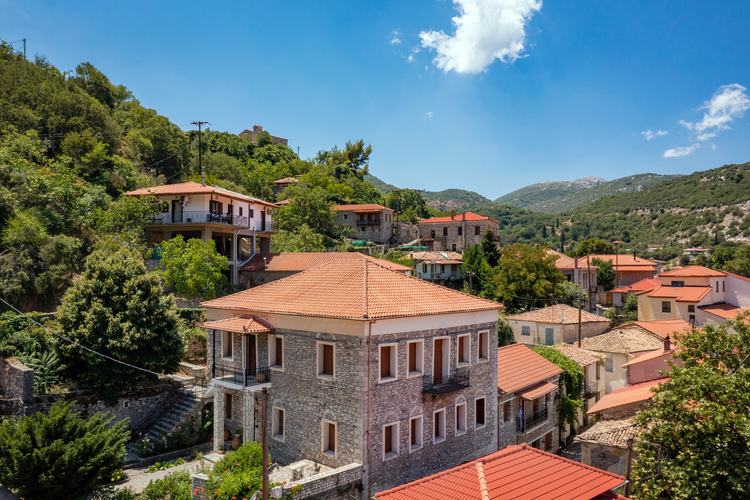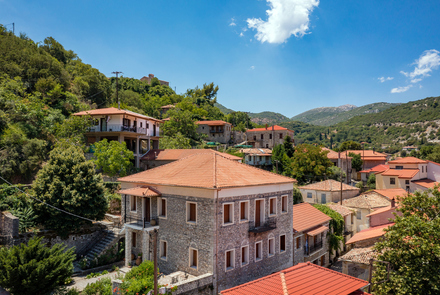Another fascinating archaeological destination in the semi-mountainous Ilia, the ancient walled city of Alifera, south of the Alfios river valley, awaits the antiquarian visitor to offer him the joy of discovering important monuments and to teach him about its mythology and history. In ancient times Alifera was a city of Arcadia on the border with Triphylia.
It owes its name to Alifiros, one of the fifty sons of Lycaon, mythical king and progenitor of the Arcadians. The remains of the city date from the late archaic to the Roman era, but it seems that the classical and Hellenistic eras were its prosperity season. The city was founded in a naturally fortified position, on top of a rocky ridge with the added protection of walls in the most exposed parts. Of the strong fortification which was reinforced by at least three towers, mostly the lower layers of stones are preserved while the building material of the walls remains largely scattered around the point of their collapse.
Apart from the impressive remains of the ancient fortification, visible are the lower parts and foundations of two important monuments of ancient Alifira, whose identification with the sanctuary of Athena and the sanctuary of Asclepius is possible through the book of the Arcadians of Pausanias. The Doric pavilion temple of Athena, in the late archaic period, with the large altar and an inscribed pedestal for the outdoor colossal statue of the goddess, refer to the myth that the daughter of Zeus was born and raised in Alifera. In fact, not far from the temple, the Tritonida spring has been identified, which is related to the tradition that Athena was born next to the river Triton.
To the west of the ancient city, within the fortifications, the Asklepiio, a small temple and an altar dedicated to Asklepios and part of another auxiliary building for worship, have come to light after excavation. Part of Alifera, the so-called lower city has been located lower, outside the fortification, to the north and east of the acropolis. Adjacent to the area, but outside of it, the ancient necropolis is preserved with monumental, particularly well-constructed tombs from the Hellenistic era.
We also know from the ancient sources that the city joined the Audience of the Arcadians after the defeat of the Lacedaemonians in the battle of Leuctra (371 BC) and participated in the settlement of Megalopolis. Alifera was granted for a short time to the state of Ilia in the 3rd century BC which is a period of prosperity for the city, as evidenced by the construction of luxurious tombs.
Copyediting: Ephorate of Antiquities of Ilia
Access by private car. Access to the archaeological site via the country road and the footpath.
Outdoor spaces. Always open. By prior arrangement with the Ephorate of Antiquities of Elis
- Platiana of Ilia, P.C. 27062
- efahle@culture.gr
- 26240 22742 - 2624023753 (Ephorate of Antiquities of Ilia)
- Police Department of Elis - P.D. of Krestena, Ephorate of Antiquities of Ilia

